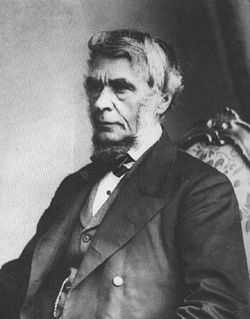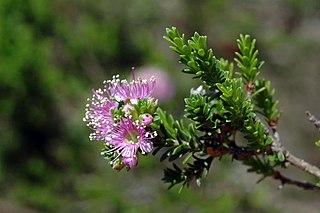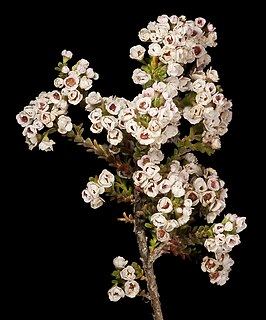| Scholtzia capitata | |
|---|---|
| Scientific classification | |
| Kingdom: | Plantae |
| Clade: | Angiosperms |
| Clade: | Eudicots |
| Clade: | Rosids |
| Order: | Myrtales |
| Family: | Myrtaceae |
| Genus: | Scholtzia |
| Species: | S. capitata |
| Binomial name | |
| Scholtzia capitata | |
Scholtzia capitata is a shrub species in the family Myrtaceae that is endemic to Western Australia. [1]

Myrtaceae or the myrtle family is a family of dicotyledonous plants placed within the order Myrtales. Myrtle, pohutukawa, bay rum tree, clove, guava, acca (feijoa), allspice, and eucalyptus are some notable members of this group. All species are woody, contain essential oils, and have flower parts in multiples of four or five. The leaves are evergreen, alternate to mostly opposite, simple, and usually entire. The flowers have a base number of five petals, though in several genera the petals are minute or absent. The stamens are usually very conspicuous, brightly coloured and numerous.

Endemism is the ecological state of a species being unique to a defined geographic location, such as an island, nation, country or other defined zone, or habitat type; organisms that are indigenous to a place are not endemic to it if they are also found elsewhere. The extreme opposite of endemism is cosmopolitan distribution. An alternative term for a species that is endemic is precinctive, which applies to species that are restricted to a defined geographical area.
The erect shrub typically grows to a height of 0.3 to 2.5 metres (1.0 to 8.2 ft). It blooms between July and December producing pink-white flowers. [1] The plant has little foliage and are used as a bunched cut flower. [2]
It is found in undulating terrain and in winter wet depressions in the Mid West and Wheatbelt regions of Western Australia where it grows in sandy soils. [1]

The Mid West region is one of the nine regions of Western Australia. It is a sparsely populated region extending from the west coast of Western Australia, about 200 kilometres (120 mi) north and south of its administrative centre of Geraldton and inland to 450 kilometres (280 mi) east of Wiluna in the Gibson Desert.

The Wheatbelt is one of nine regions of Western Australia defined as administrative areas for the state's regional development, and a vernacular term for the area converted to agriculture during colonisation. It partially surrounds the Perth metropolitan area, extending north from Perth to the Mid West region, and east to the Goldfields-Esperance region. It is bordered to the south by the South West and Great Southern regions, and to the west by the Indian Ocean, the Perth metropolitan area, and the Peel region. Altogether, it has an area of 154,862 square kilometres (59,793 sq mi).
The species was first formally described by the botanist George Bentham in 1867 in the work Orders XLVIII. Myrtaceae- LXII. Compositae. in Flora Australiensis . The only synonym is Baeckea capitata as described by Ferdinand von Mueller in 1882 in Systematic Census of Australian Plants. [3]

George Bentham was an English botanist, described by the weed botanist Duane Isely as "the premier systematic botanist of the nineteenth century".

Flora Australiensis: a description of the plants of the Australian Territory, more commonly referred to as Flora Australiensis, and also known by its standard abbreviation Fl. Austral., is a seven-volume flora of Australia published between 1863 and 1878 by George Bentham, with the assistance of Ferdinand von Mueller. It was one of the famous Kew series of colonial floras, and the first flora of any large continental area that had ever been finished. In total the flora included descriptions of 8125 species.

Baron Sir Ferdinand Jacob Heinrich von Mueller, was a German-Australian physician, geographer, and most notably, a botanist. He was appointed government botanist for the then colony of Victoria by Governor Charles La Trobe in 1853, and later director of the Royal Botanic Gardens, Melbourne. He also founded the National Herbarium of Victoria. He named many Australian plants.





